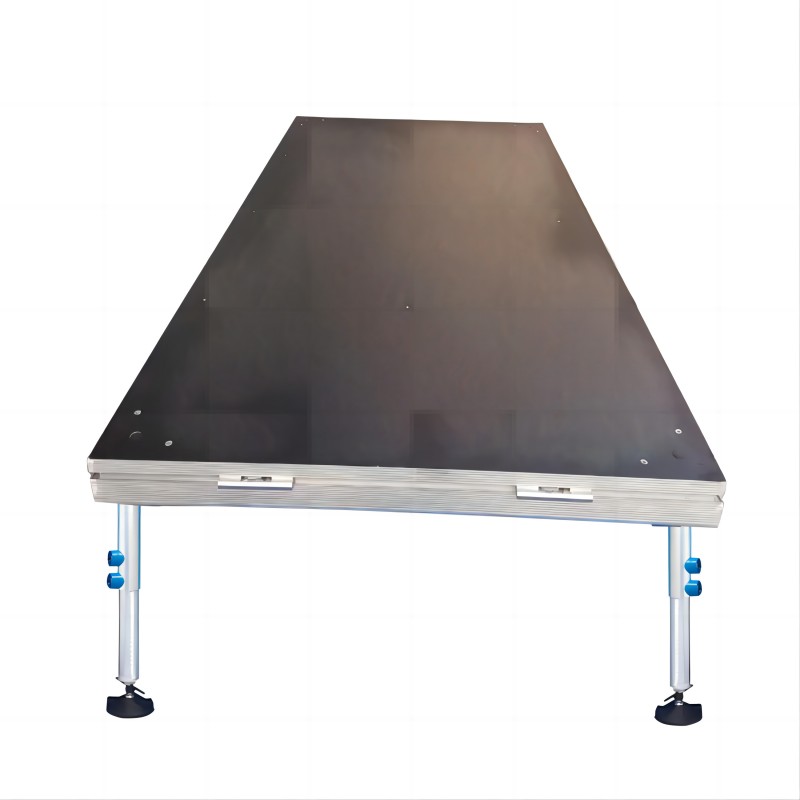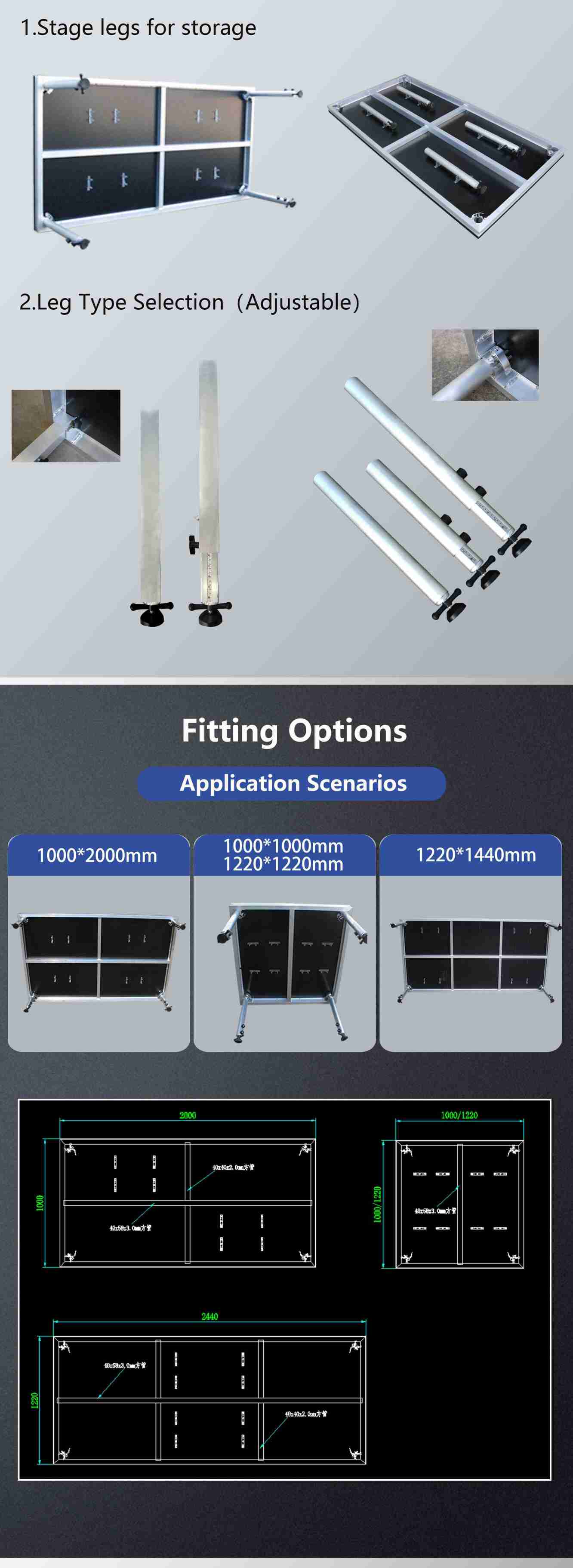What Are You Looking For?
Material: The stage components are typically constructed from lightweight yet durable materials to ensure portability and longevity. Common materials include aluminum alloy for the frame. These materials are chosen for their strength, stability, and resistance to wear and tear.
Size: The dimensions of the stage are approximately 8 meters (width) by 6 meters (length), providing a spacious platform for performers, speakers, and equipment. This size allows for flexibility in stage setup and can accommodate larger groups of performers or a variety of staging configurations.
| 0.2-0.3m | 0.4-0.6m | 0.6-1m | |
| packing weight | 1000kg | 1000kg | 1000kg |
| packing volume | 5cbm | 5cbm | 5cbm |
| Item | Specification | Quantity | |||
| stage topping | topping sizes(LXW): | 2x1m | 24 pcs | ||
| topping material: | wooden | ||||
| stage legs | adjustable height: | 0.6-1m | 96 pcs | ||
| stage Leg connectors | Connector for 4 legs | 15 pcs | |||
| Connector for 2 legs | 16 pcs | ||||
| stairs | 2 pcs | ||||
Assembly: Portable concert stages of this size are designed for quick and easy assembly. The modular design allows for rapid setup and teardown, making it ideal for events held in different locations or venues. Connectors and locking mechanisms ensure that the stage components fit together securely, providing stability and safety during use.
Platform Panels: These are the main sections that form the surface of the stage. In an 8x6m stage, you'll likely have multiple platform panels, each measuring a standard size (e.g., 1x1m or 2x1m). These panels are typically made of sturdy materials like plywood or reinforced plastic, providing a stable surface for performers and equipment.
Connectors: Connectors are used to join the platform panels together securely. They may include locking pins, clamps, or brackets, designed to ensure stability and safety during assembly and use. The connectors are usually integrated into the platform panels for easy setup and teardown.

